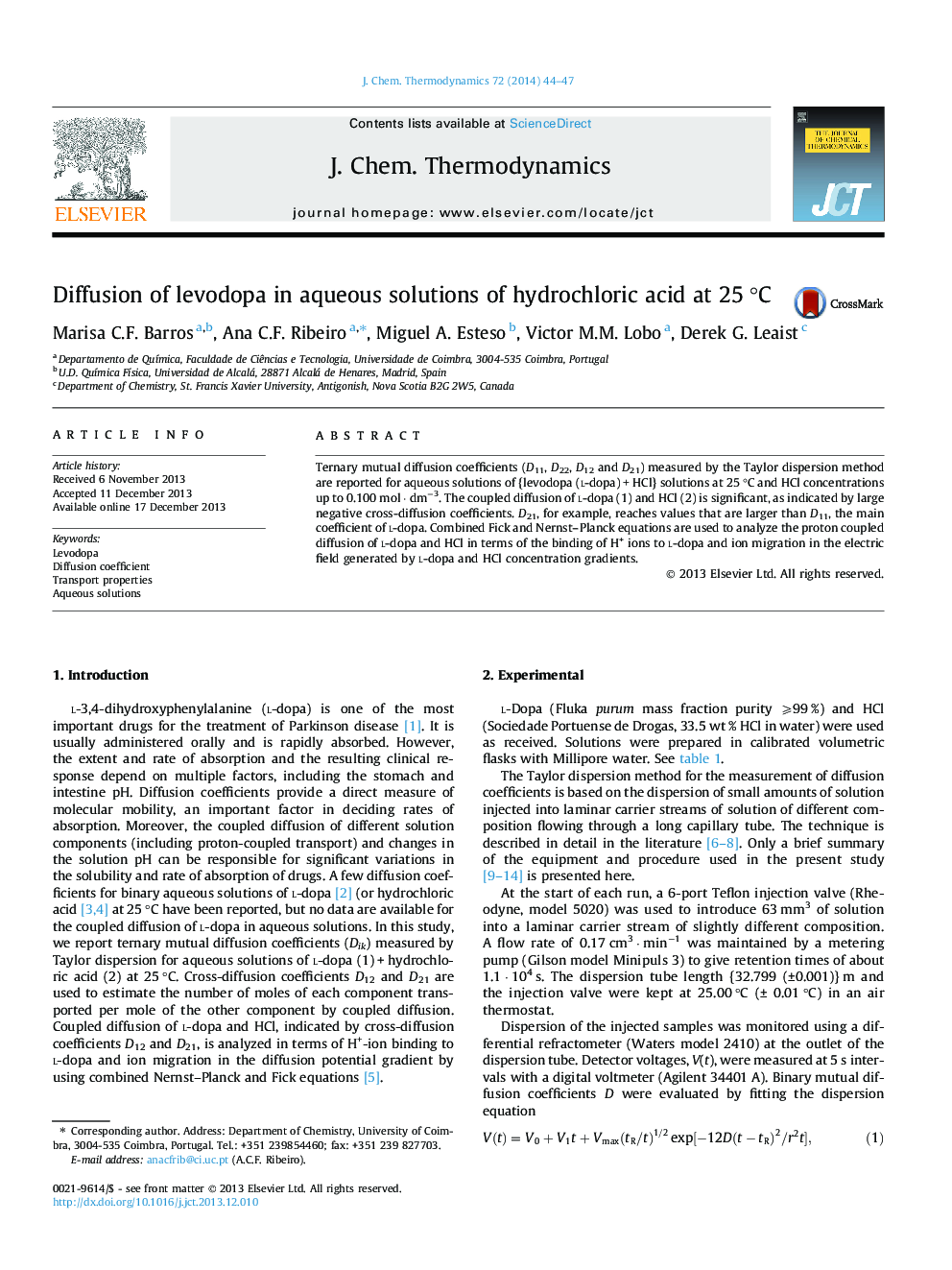| Article ID | Journal | Published Year | Pages | File Type |
|---|---|---|---|---|
| 215397 | The Journal of Chemical Thermodynamics | 2014 | 4 Pages |
•Ternary mutual diffusion coefficients of aqueous l-dopa plus hydrochloric acid at 25 °C.•Diffusion of l-dopa driven by HCl gradients.•Coupled diffusion of l-dopa and HCl.
Ternary mutual diffusion coefficients (D11, D22, D12 and D21) measured by the Taylor dispersion method are reported for aqueous solutions of {levodopa (l-dopa) + HCl} solutions at 25 °C and HCl concentrations up to 0.100 mol · dm−3. The coupled diffusion of l-dopa (1) and HCl (2) is significant, as indicated by large negative cross-diffusion coefficients. D21, for example, reaches values that are larger than D11, the main coefficient of l-dopa. Combined Fick and Nernst–Planck equations are used to analyze the proton coupled diffusion of l-dopa and HCl in terms of the binding of H+ ions to l-dopa and ion migration in the electric field generated by l-dopa and HCl concentration gradients.
Graphical abstractFigure optionsDownload full-size imageDownload as PowerPoint slide
